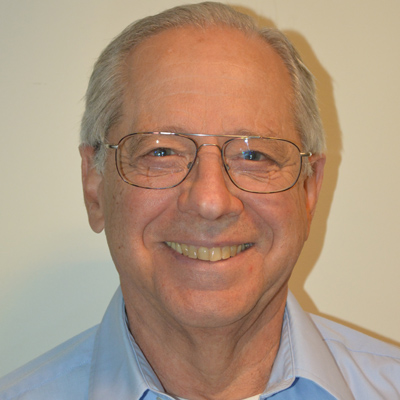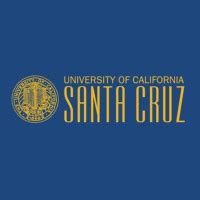Natural rhythms of proteins
Proteins are made up of amino acids that determine the protein’s unique three-dimensional structure and its specific function. Responsible for most of the work in cells, proteins are required for the function and regulation of the body’s tissues and organs. The study of proteins is thus necessary for illuminating our understanding of the body’s functions and diseases. Dr. David Kliger, Research Professor of Chemistry at the University of California, Santa Cruz, uses lasers to understand how proteins function. Specifically, using time-resolved laser spectroscopy, he and his team aim to understand how various proteins carry out their function and, furthermore, how they fold into the native structures that enables them to carry out their function. Dr. Kliger’s research is also helping to create molecular tools that can be used to map out neural connections in optogenetics experiments as well as study the effects of protein mutations to ultimately understand how protein function is affected by mutations.
Over the years Dr. Kliger and his team have developed new spectroscopic tools to enable them to measure various forms of polarized light spectroscopy with high time resolution. This allows them to gain information about structural changes in proteins on microsecond or sub-microsecond timescales. As the only lab in the world with this capability, Dr. Kliger’s team of advanced researchers and undergraduate researchers alongside collaborators within the University of California, Santa Cruz and elsewhere, are also able to study proteins and their mutants that are available in only very small quantities. Therefore, while Dr. Kliger has continued to develop novel techniques, his lab’s tools and findings have been widely disseminated, thus having an impact on research around the world. His lab’s unique capabilities have propelled their basic research towards a potential future in biomedical applications that could be useful for health applications.
Current research includes:
-
Rhodopsin: Rhodopsin is a visual pigment that changes from an inactive to an active state when it absorbs light. It then reacts with other proteins in the retina, resulting in blockage of ion channels and electrical signals sent to the brain indicating the presence of light. Dr. Kliger’s study of rhodopsin is helping to identify ways in which mutations to rhodopsin lead to disease or vision problems and potentially how to mitigate problems caused by such mutations. Additionally, because rhodopsin is a G-protein-coupled receptor, a class of proteins targeted by half of all drugs, Dr. Kliger’s research could lead to a better understanding of how these proteins work and thus to important novel drug discovery.
-
Hemoglobin: Dr. Kliger’s team studies the role of water in the functioning of heme proteins. Presently, he and his team are focused upon hemoglobin to see how water entry into the protein affects how the protein binds oxygen. This project may shed light upon ways to produce blood substitutes while shifting our fundamental understanding of hemoglobin and its role in biochemistry.
-
Protein Folding: Typical studies of protein folding look at folding of proteins in dilute solutions. However, proteins exist in our cells, which are very crowded with many other proteins, and other macromolecules. Dr. Kliger is looking at how the mechanism of cytochrome c folding changes in the presence of crowding agents that mimic cellular conditions. Future applications include making sense of the many diseases that result from protein misfolding.
-
Channelrhodopsins: Channelrhodopsins are bacterial rhodopsins that open an ion channel upon exposure to light. They are being used extensively in optogenetics experiments but little is known about how they work. Dr. Kliger and his team are studying the mechanism of function of channelrhodopsins. In so doing, they hope to determine how to modify the proteins so that they are more efficient for studying neural systems.
Bio
From an early age, Dr. Kliger was fascinated by science. While none of his family members were scientists, his parents did see the value in being surrounded by opportunities to engage in the sciences. Dr. Kliger remembers when his parents bought him his first basic chemistry set; he found it fascinating. Since that time, his passion and excitement for engaging in a hands-on way with questions about our world have guided his academic and professional careers.
In college, he became a chemistry major because that is what he believed a scientist was. As a chemistry major, he learned that he also loved physics and began to focus on physical chemistry. He got the chance as an undergraduate researcher to work on the theory of how lasers function. Building on his experiences, when he went to graduate school, Dr. Kliger wanted to do research that used lasers as a tool to study molecular properties. That brought him to the lab of Dr. Andreas Albrecht. Dr. Albrecht was just starting to use lasers to study spectral properties of molecular excited states and therefore, Dr. Kliger’s interests aligned closely with his mentors.
After getting his degree, at the time of the Vietnam War, Dr. Kliger wanted to learn more theory but also wanted to apply his experimental knowledge to areas that would be used for useful applications rather than to develop military weapons. This brought him to Harvard and a year as a postdoc with Dr. Martin Karplus (a 2014 Chemistry Nobel Prize winner). While there, Dr. Kliger studied the properties of rhodopsin, a protein in the eye responsible for absorbing light and transmitting a signal to the brain that light has been detected. Following his research with Dr. Karplus, Dr. Kliger moved to the University of California, Santa Cruz, where he accepted a faculty position in which he was able to combine the areas of studying how rhodopsin went from an interactive state in the dark to an active state after absorbing light. Dr. Kliger’s over forty years of research have lead him to his present studies which use tools to study the spectra and kinetics at physiologically relevant temperatures.
In his free time, aside from research, Dr. Kliger enjoys swimming and cycling. When not busy in the lab or exercising you can find him relaxing by playing the piano or practicing his new found hobby, wood-working.
Website: www.chemistry.ucsc.edu/faculty/singleton.php?&singleton=true&cruz_id=kliger


